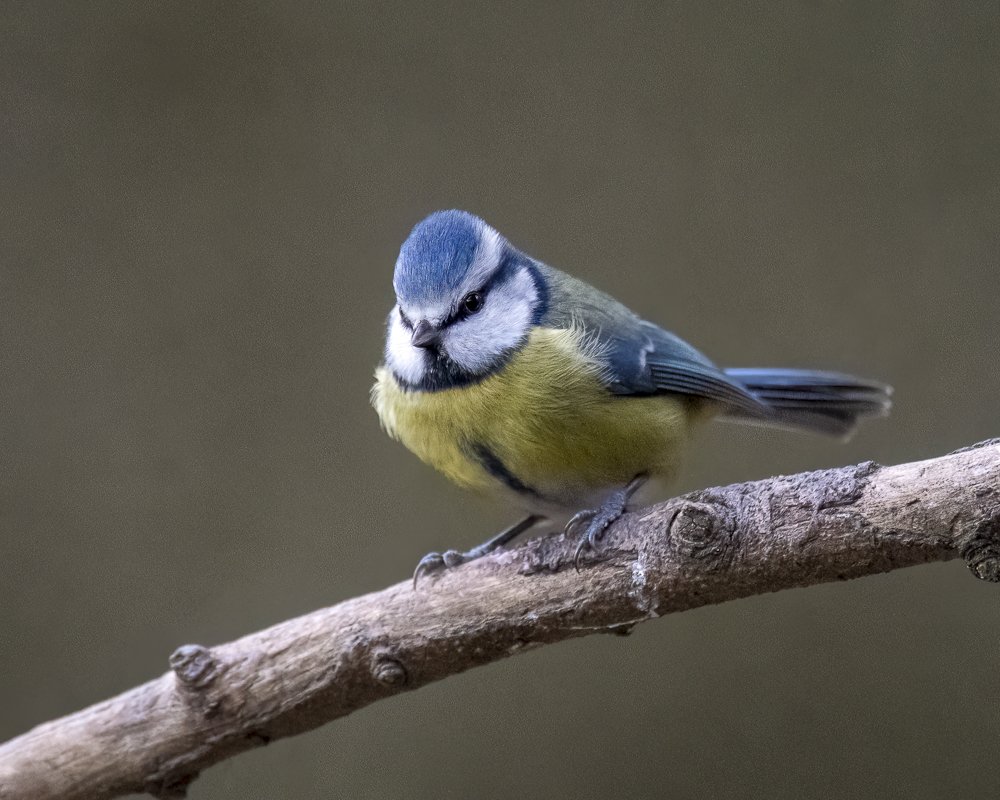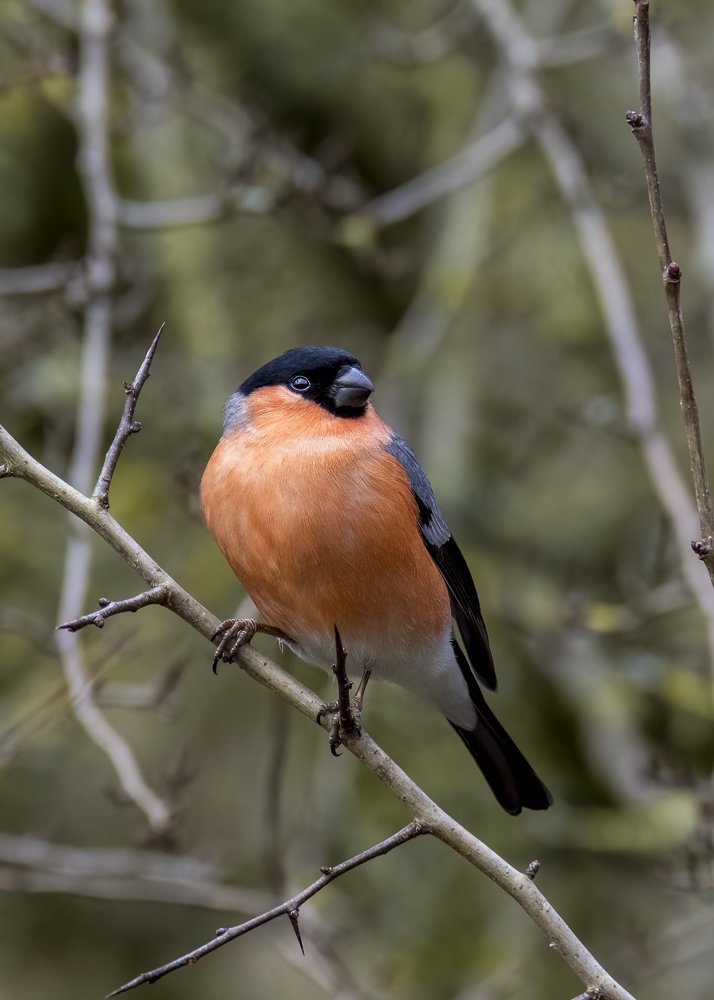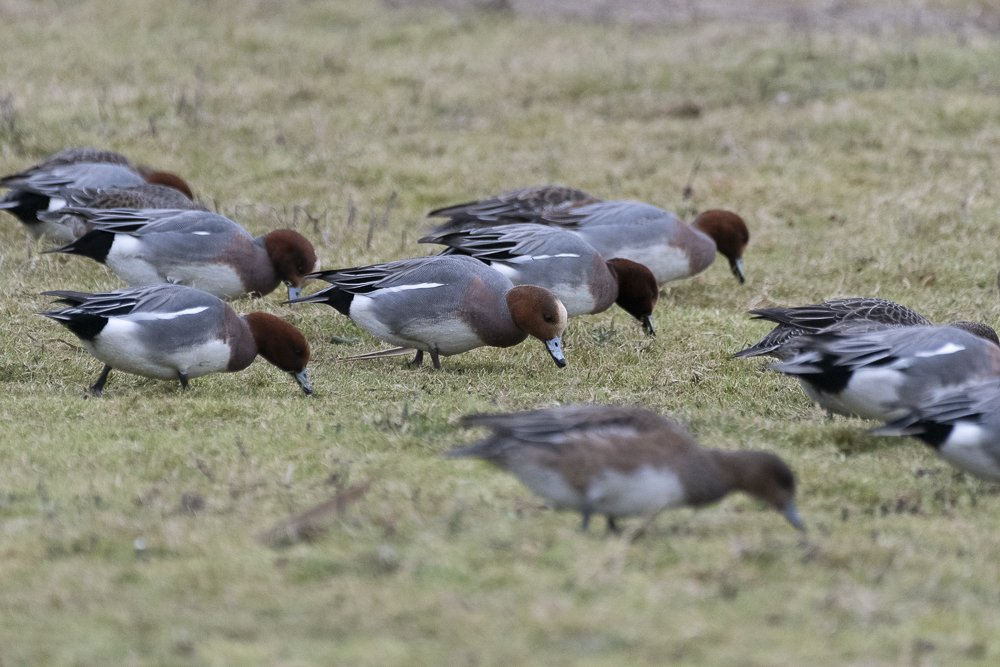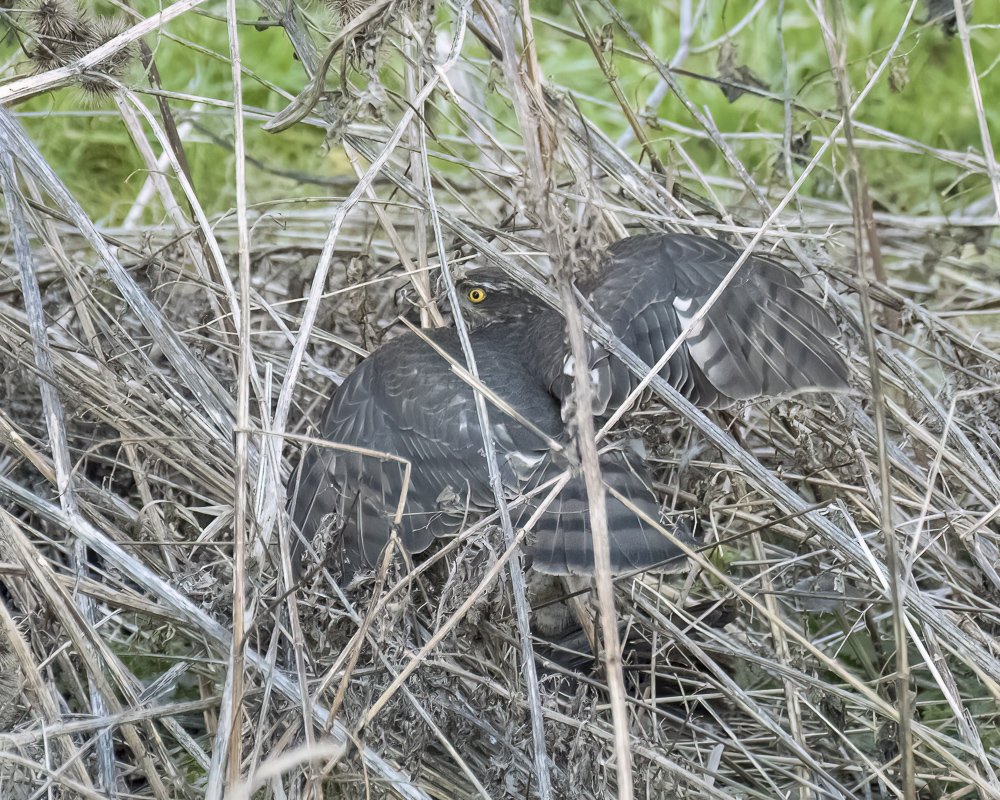February has been known to have the name “February Fill Dyke” as this month is traditionally very wet and cold, thus filling the dykes and ditches with water. This year the month has had cold days and nights, but it has also been very mild some days and the rainfall extremely low prompting those in the know to forecast a water shortage in our area. We shall see…….
The start of the month and himself is absolutely determined to master the Nikon Z72 mirrorless camera for wildlife. The morning looked promising, so we decided to take a trip to Summer Leys in Northamptonshire again as the feeding station is a good place to sit and watch birds in close up. Also, a good place to try and master a frustrating camera with all its features.
Male Bullfinches are so handsome and Summer Leys has a good collection of pairs and most, but not all seem to free of the scaly leg that seems to plague the finch population. This is a condition caused by a mite called 'Knemidocoptes Mutans' which burrows under the skin on a bird's legs to feed on the keratin. The tunnelling causes irritation with leg scales becoming thickened, as the keratin seeps from the leg tissue, and eventually becoming encrusted and lifting away from the leg.
This Male Bullfinch is clearly suffering from scaly leg. Most birds do create an immunity and recover. So, although it looks horrible it is not thought to be life threatening.
A pair of Greenfinches at the feeders. Not as common as they used to be.
A quick fluttering deep in the hedgerow caught our eye. It turned out to be a lovely little Goldcrest. A quick picture and it was gone. They are so tiny.
We spent a pleasant hour in the hide overlooking the water spotting lots of Lapwings, Golden Plover and other waders out on the islands. We were treated to a display of Little Egrets getting a bit irritated with one another, each wanted to fish the same bit of shoreline.
One of the disgruntled Egrets directly in front of the hide. These are great to photograph as they are relatively slow flyers as they go from fishing spot to fishing spot. Or, he could just have been showing off in front of us.
A pair of Pied Wagtails were bobbing about the waters edge.
Widgeon grazing out on the meadow. Lovely to see.
We had a surprise sighting in the wood near the house one morning. A beautiful Buzzard was keeping a look out for food, whilst warming up in the morning sun. Or maybe he had already eaten and was just feeling pleasantly full. He didn’t seem to be bothered about the dog walkers, just gave them “the look” Think he had found a sheltered spot and was reluctant to leave. It was a bit of a chilly morning despite the sunshine. This one is probably one of the pair seen hunting and calling regularly over the farmland around the village.
A flock of Black Tailed Godwits landing at Welney. The water had receded and numerous wading birds had found their way back to the flood meadows.
Beautiful colours showing well on the Lapwings, they a more than just black white.
A bit of a kerfuffle going on as two Coots decided to have an argument on the ice and were finding it hard to keep their footing. Coots like to have a bit of a heated squabble every now and then.
Maybe the last time we will see the Whooper Swans this winter as they will soon be off to their breeding grounds in Scandinavia, and for a while, the Fens will seem very quiet and empty.
Our Owl spotting was interrupted by a squawk and a scream as a Sparrowhawk flew in in front of our eyes and carried off a Moorhen. Tough old life out there in the wild.
More drama at Welney as a Kestrel flew in to take the prey from the Barn Owl. We are not sure if the other bird is another Kestrel or Barn Owl. It all happened so quickly that we were not aware there were three birds involved until we saw our pictures. Not great as it was a bit misty and we were looking into the setting sun.
This part of Welney known as Lady Fen is closed to the public from 1st March to protect the breeding birds that use the area to nest in and hunt. You can still have great views over the area from the visitor centre though, whilst having a cup of tea and cake in the cafe. Now that’s comfortable bird-watching.
The Welney Barn Owl.
We hadn’t visited Burwell Fen for a while and had heard that the Short Eared Owls here make an appearance late afternoon. We were not disappointed. As the sun broke through the clouds the Owls appeared quartering the fields in the golden light and we managed to get some pictures in the late afternoon sun.
Short Eared Owl attempting to land on a twiggy branch of a bush.
The thing with Burwell Fen is that while you are waiting for the Owls to appear you can always be sure of entertainment from the Konik ponies. Grazing animals are essential to the development of vegetation in new areas of the nature reserve owned by the National Trust. Along with Highland cattle, the ponies help keep the landscape open and allow wetland and grassland plants to become established. The breed are capable of withstanding life on the fen throughout the year and thrive on whatever they can forage.
We also had the pleasure of watching two Barn Owls out hunting and this one landed on a post nearby. This is probably a female Owl as they tend to have darker wings and spots on their chests. Male Barn owls are paler and have very white chests.
We do not always stand together when out watching and this time the bonus was that we got different views of this gorgeous Barn Owl. No matter how many times we see and watch Barn Owls, it never ceases to be a thrill and a joy.
Do you ever get the feeling you are being watched? This cheeky little Long Tailed Tit was peering into our window reminding us to fill the feeders up. We have been very lucky to have a flock of about 15 or more visiting us most days. The garden comes alive when they visit, flitting about from feeders to shrubs to the bird bath. Just love them.
So, that’s February been and gone in a flash. The winter migrants will soon be on there way back to their breeding grounds and the Summer migrants will be arriving. The days are starting to lengthen and we can’t wait to hear the call of the Chiff Chaffs in the nearby wood, then we know spring is here, followed by the woodland spring flowers such as Primroses. These fill the woodland floor with splashes of yellow and then a blue carpet of Bluebells. The trees start to come into leaf with various shades of light green. There is nothing so lovely as an English Woodland in the spring; but Autumn is not bad either.























